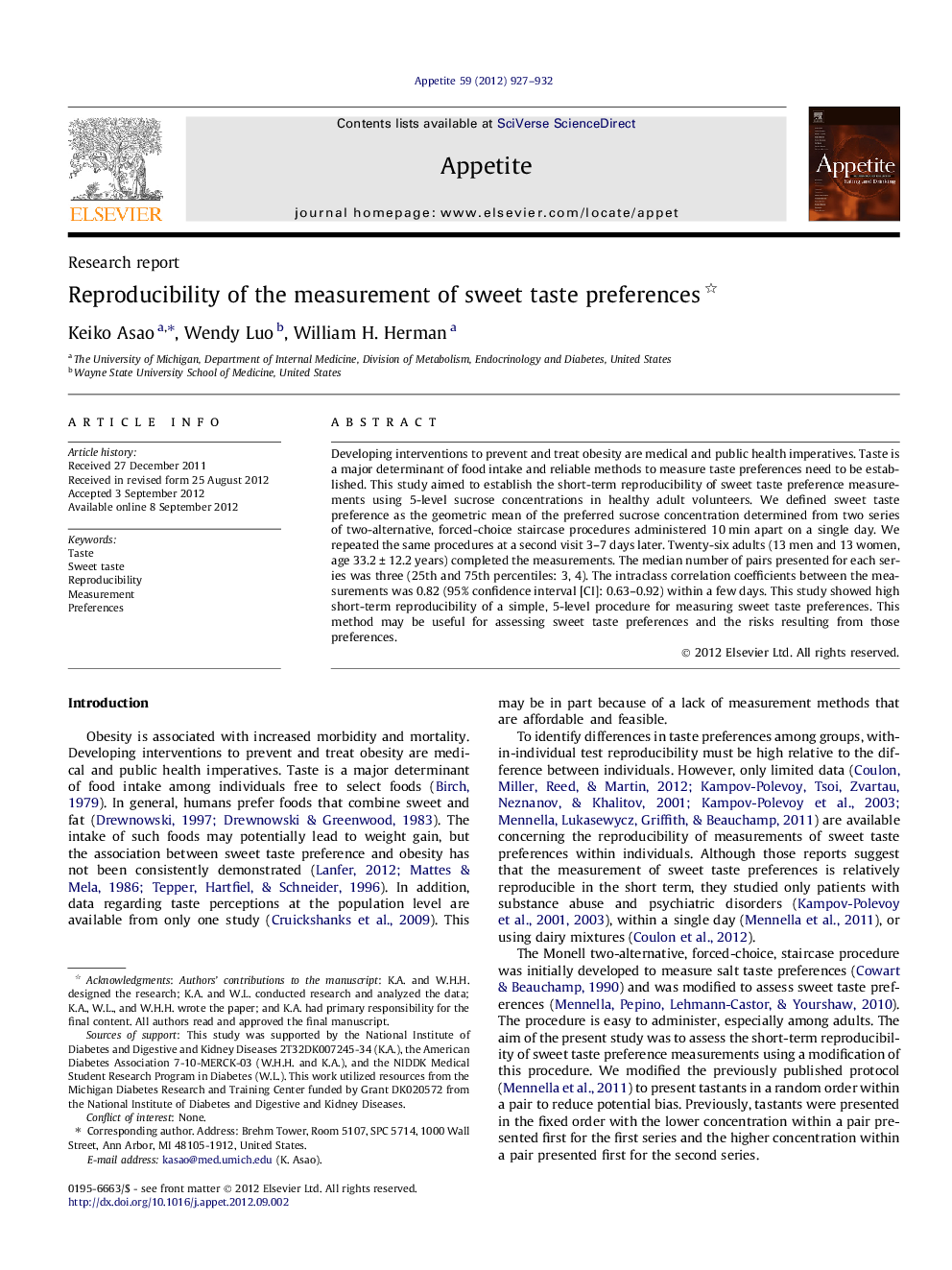| Article ID | Journal | Published Year | Pages | File Type |
|---|---|---|---|---|
| 940200 | Appetite | 2012 | 6 Pages |
Developing interventions to prevent and treat obesity are medical and public health imperatives. Taste is a major determinant of food intake and reliable methods to measure taste preferences need to be established. This study aimed to establish the short-term reproducibility of sweet taste preference measurements using 5-level sucrose concentrations in healthy adult volunteers. We defined sweet taste preference as the geometric mean of the preferred sucrose concentration determined from two series of two-alternative, forced-choice staircase procedures administered 10 min apart on a single day. We repeated the same procedures at a second visit 3–7 days later. Twenty-six adults (13 men and 13 women, age 33.2 ± 12.2 years) completed the measurements. The median number of pairs presented for each series was three (25th and 75th percentiles: 3, 4). The intraclass correlation coefficients between the measurements was 0.82 (95% confidence interval [CI]: 0.63–0.92) within a few days. This study showed high short-term reproducibility of a simple, 5-level procedure for measuring sweet taste preferences. This method may be useful for assessing sweet taste preferences and the risks resulting from those preferences.
► We aimed to assess the short-term reproducibility of sweet taste preference. ► We repeated two-alternative, forced-choice staircase procedures in a few days. ► Short-term reproducibility of sweet taste preference was high.
